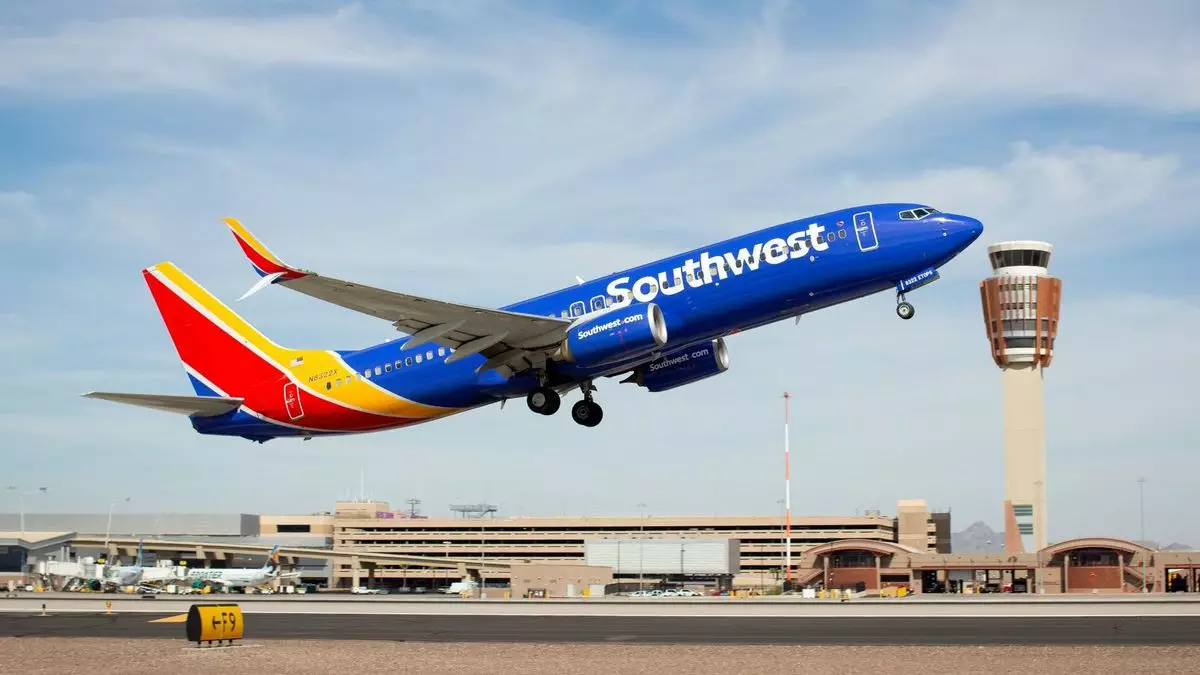In a significant shift in its operational landscape, Southwest Airlines has officially launched its first red-eye flights, marking a new era for the airline known for its budget-friendly approach and extensive route network. On a fateful Thursday night, the inaugural overnight flights embarked from key cities, including Las Vegas, Los Angeles, and Phoenix, bound for various destinations east of the Mississippi. This momentous occasion was celebrated with giveaways such as gift bags and commemorative cards, showcasing Southwest’s intent to make a memorable entrance into the overnight flight segment.
The initial rollout consists of five daily red-eye services, connecting Las Vegas to Baltimore and Orlando, along with Los Angeles routes to Baltimore and Nashville, as well as a Phoenix-Baltimore connection. This venture is not merely a whimsical addition; it is part of a broader initiative to elevate the airline’s performance, particularly as it seeks to catch up to larger competitors like Delta and United, which have consistently outperformed them post-pandemic. By June, the airline plans to expand its red-eye offerings to a total of 33 flights daily, indicating its serious commitment to overnight travel.
Southwest’s entrance into red-eye flying is more than just about broader offerings; it’s about enhancing connectivity for its customers. The airline emphasizes that this shift aims to maximize aircraft utilization and provide more direct options for travelers. For instance, the planned Honolulu-Las Vegas overnight flight, set to launch in April, is expected to increase itinerary choices for those traveling from Honolulu by 50%. This improvement is noteworthy for a customer base that heavily relies on connections, with up to 75% of passengers on red-eye flights also booking connecting itineraries, illustrating the demand for such services.
The introduction of red-eye flights coincides with a comprehensive commercial strategy that also includes significant operational changes for the company. In 2026, Southwest anticipates rolling out assigned seating along with extra legroom options, which could fundamentally alter the customer experience. Complementing these offerings will be a series of cost-cutting measures aimed at enhancing financial stability and customer satisfaction in a highly competitive landscape. The company claims that these combined efforts could yield the operational equivalent of acquiring 18 additional aircraft, a remarkable boost to its logistical capabilities.
A noteworthy development accompanying the red-eye flights is Southwest’s new interline arrangement with Icelandair—its first partnership of this kind in decades. Initially, customers will only be able to book these itineraries through Icelandair channels, linking the two airlines through Baltimore, which is set to be expanded to include Denver and Nashville later this year. This partnership underscores Southwest’s aggressive pursuit of diversifying its network connections as it prepares for the next chapter in its growth strategy.
Southwest Airlines is not only stepping into the red-eye market; it is reorienting its entire operational philosophy towards improved customer experience, competitiveness, and strategic partnerships. As these changes unfold, they are sure to reshape the airline’s standing within the domestic travel market and beyond.


Napsat komentář